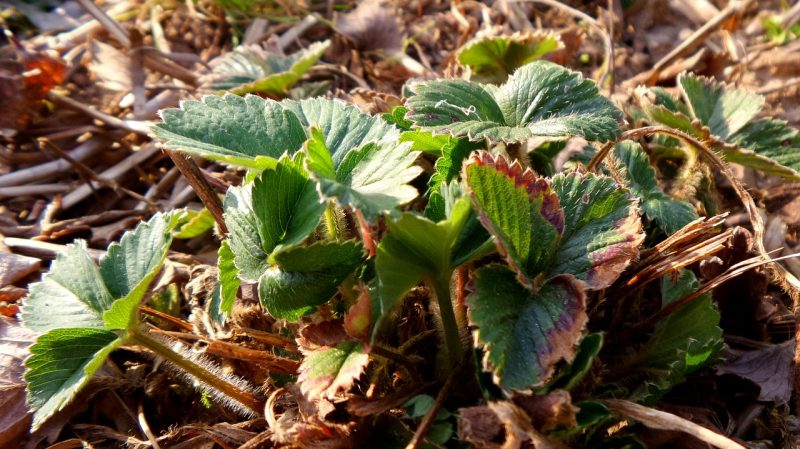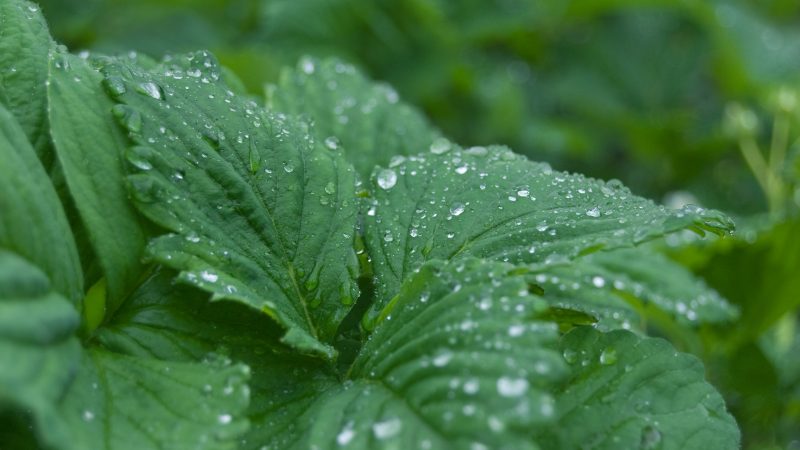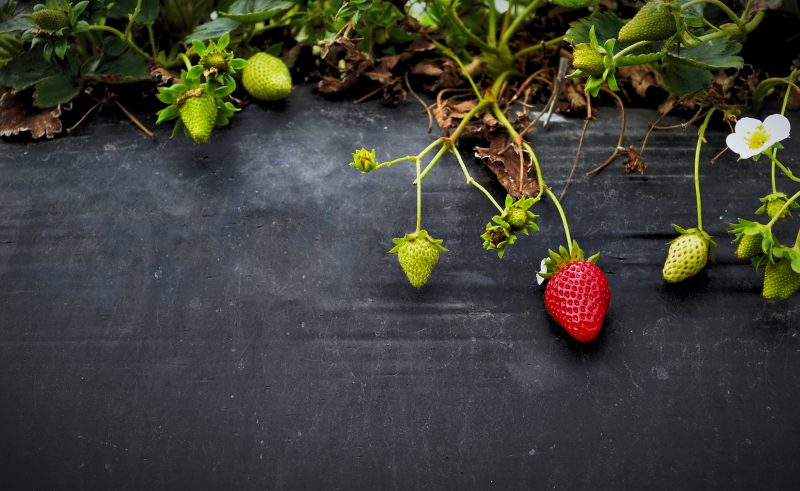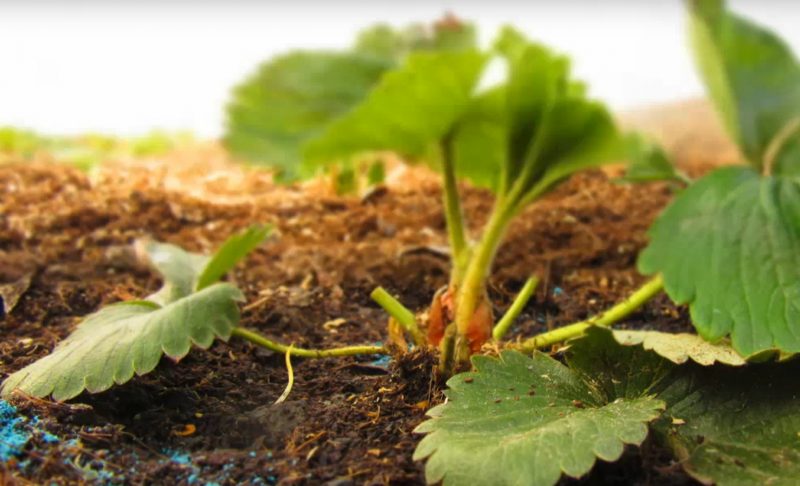It is difficult to find a summer resident who would not grow these popularly beloved berries on his plot. The key to the future harvest is the proper processing of strawberries in the spring. At this stage, everything is important: harvesting mulch, where pests could hide, fertilizing the soil, and treating bushes for preventive purposes. The use of chemicals is allowed, but many gardeners prefer natural substances.
Material Content:
Stages of preparing beds in the garden for the new season
Many summer residents who for many years grew strawberries with a “carpet” (that is, without beds, and without special care), believe that unpretentious berries need only watering. Well, in a pinch, you can sprinkle several buckets of manure. However, today new varieties, including hybrid ones, require special care. If you follow all the rules - the harvest will be excellent.
Removing dry leaves, mulch
The first thing to do in the spring is to carefully remove the old mulch around the bushes. She has already played her part. You should not leave it in any case, because mulch can become a real breeding ground for pests and pathogenic flora

The same goes for foliage. In autumn, leaves of apple trees, pears, plums cover the beds with strawberries with a yellow carpet, in winter they protect plantings from frost. But these same leaves will cause great harm if they become carriers of diseases.
Mulch and foliage are taken away from the site or burned in a specially designated place.
Nutrient Enrichment
The cleaned beds carefully inspect, check each strawberry bush.If the roots of the plants are exposed after winter, they are sprinkled with soil. In any case, the earth is loosened, nitrogen fertilizers are added.
Strawberry will also be grateful for introducing sawdust, peat, humus into the soil.
It is also advisable to spray the bushes themselves and the earth around them with a solution of copper sulfate until growth has begun. This will prevent many "strawberry" ailments.
Seating of old bushes
During the inspection of strawberry beds, it may turn out that some bushes thoroughly froze or died. This strawberry is removed, replacing with a strong and healthy one.
For this:
- They dig out old bushes and cut the roots into several parts so that each has at least 3 leaves.
- After this, the roots of each fragment are immersed in a weak solution of potassium permanganate for disinfection.
- Then the wells are prepared. They need to make humus and nitrogen fertilizers.
- After that, the bushes are planted, always making sure that the “heart” is not covered with earth.
How to treat strawberries in the spring, medicines for diseases and pests
The most important stage of care is the treatment of strawberries from diseases. Take, for example, a dangerous disease called gray rot. The summer resident immediately recognizes the characteristic grayish coating on the surface of the berries. Powdery mildew does not spare strawberries.
Against various types of rot and fungal diseases, fungicidal preparations are used: Euparen, Fundazol, Abiga Peak, Alirin B. Try also the drug "Quadris". Azoxystrobin, which is in its composition, does not allow oxygen to penetrate to spores of fungi.
Spraying is best done in the morning and evening. For processing, alternate chemicals and folk remedies.
For these purposes, the following formulations are especially recommended:
- 3 drops of iodine per 10 liters of water;
- chopped onions and / or garlic (a kilogram of raw materials per bucket of water);
- mustard powder (use about 50 g of powder in a bucket of plain water);
- 5% solution of good old potassium permanganate.
If you have not pruned strawberry leaves for the winter and see a fungus on them, it's time to remove the affected parts of the plant. In the case of the appearance of root rot, the development of which is indicated by the rapid withering of the bush, the roots are removed and burned.
Processing strawberries from pests is also necessary. Weevil beetles are the main enemy of berries. They destroy the crop, settling in the buds.
The treatment of plantings with iodine is widely used as a control measure. It will take 0.5 teaspoon of iodine per 10 liters of water. Pour the bush with plain water, and then treat the moist soil with iodine solution. In no case do not spray iodine directly on the plants, otherwise, you will burn them. This method saves from weevil quickly and efficiently.
In general, iodine and boric acid are excellent healers for the popular berry culture. You need to take half a teaspoon of iodine, a teaspoon of boric acid, a glass of ash, ten liters of water. It is important to mix all the ingredients in the correct proportion, so as not to harm the plants.
Iodine and boric acid prevent strawberry diseases and increase yield. Do not neglect this composition and do not forget to process the berry plantings on time.
With ammonia (straw), strawberries are both fertilized and protected from pests. This tool is nitrogen-containing, so it is actively used by gardeners. In addition to medicinal properties, the great advantage of ammonia is its price, which is important for people with a modest budget. Nitrogen is extremely important not only for strawberries, but also for other plants. Ammonium does not leave harmful substances in the soil, such as nitrates. Products are completely safe for health.
Ammonia protects the plant from pests. This is a very good remedy against the May bug and its larvae. Wasp and ants also avoid processed strawberries. And the bushes are not affected by fungal and infectious diseases, such as gray rot, brown spotting. Try to combine this method with a preventative mulch.As mulch, you can use pine needles, or straw.
How to prepare a solution of ammonia? Need more soap.
- The bar must be grated and pour a small amount of ordinary hot water into it.
- Stir this mixture thoroughly until the soap is completely dissolved. Make sure that no flakes, shavings or other inclusions remain. Bubbles should be visible on the surface of the water.
- Add ammonia - 50 ml per bucket of water.
It should be noted that the finished mixture is applied immediately, otherwise ammonia will become unusable.
Usually strawberries are treated with ammonia a maximum of three times. For the active growth and fruiting of plants, this is more than enough.
Features of spring berry top dressing
Strawberry care in the spring includes mandatory dressing. For this purpose, both organic and mineral substances are used.
The first feeding of strawberries is carried out immediately after the snow melts, so that the plants develop correctly and quickly. Nitrogen-based fertilizers are applied to the soil immediately after loosening. Freshly planted strawberries are not fed, as the necessary substances are added to the hole.
The optimal time for the first feeding is the second decade of April. Mullein is a good option, you can use chicken droppings. Already in May, it is easy to prepare a wonderful fertilizer from weeds. They are weeded out, crushed, poured with a bucket of water and allowed to stand for a week.
Among summer residents, there are many adherents and foliar feeding, when the bushes are sprayed with an infusion of organic fertilizers or a solution of nitrogen. Doing it better after sunset.
Also, the timing of feeding depends on the variety of strawberries. It is important that the plant receives the necessary substances when it gains color. If you fertilize ahead of schedule, everything will go into the ground, later - fruiting will be scarce.
Competent spring care is the key to a rich strawberry crop.
















